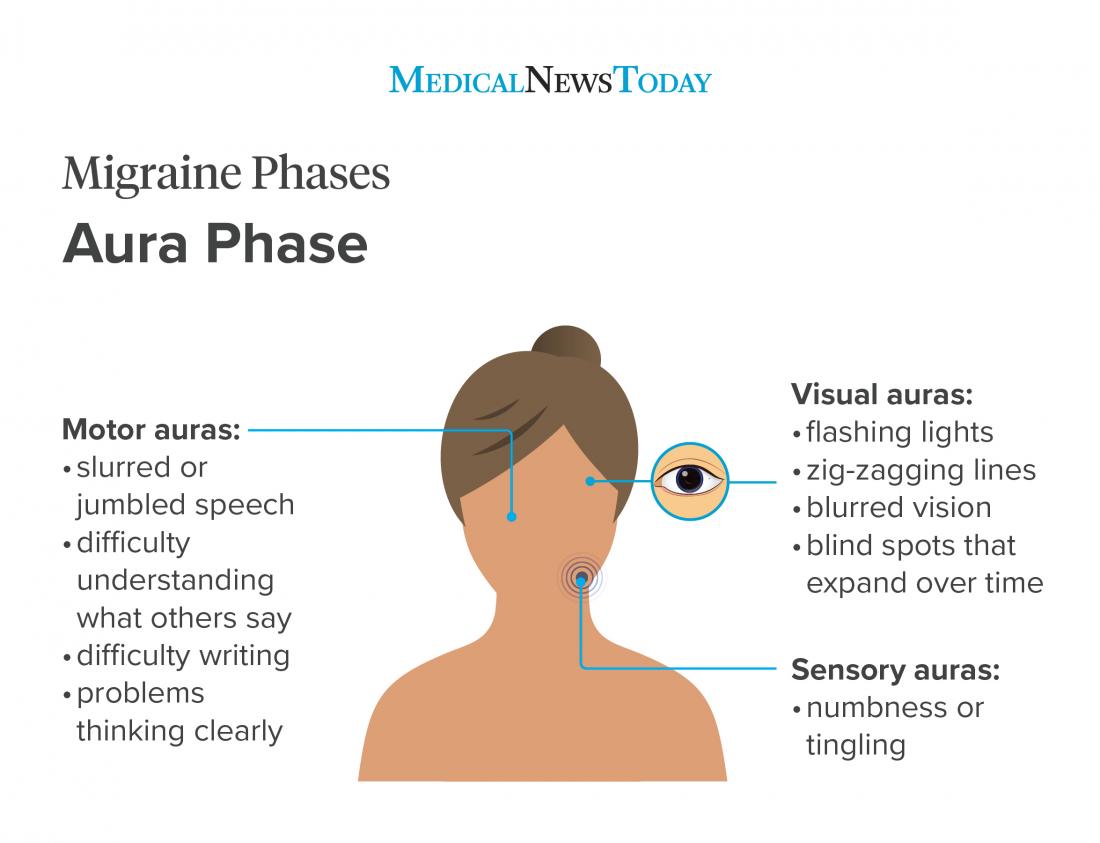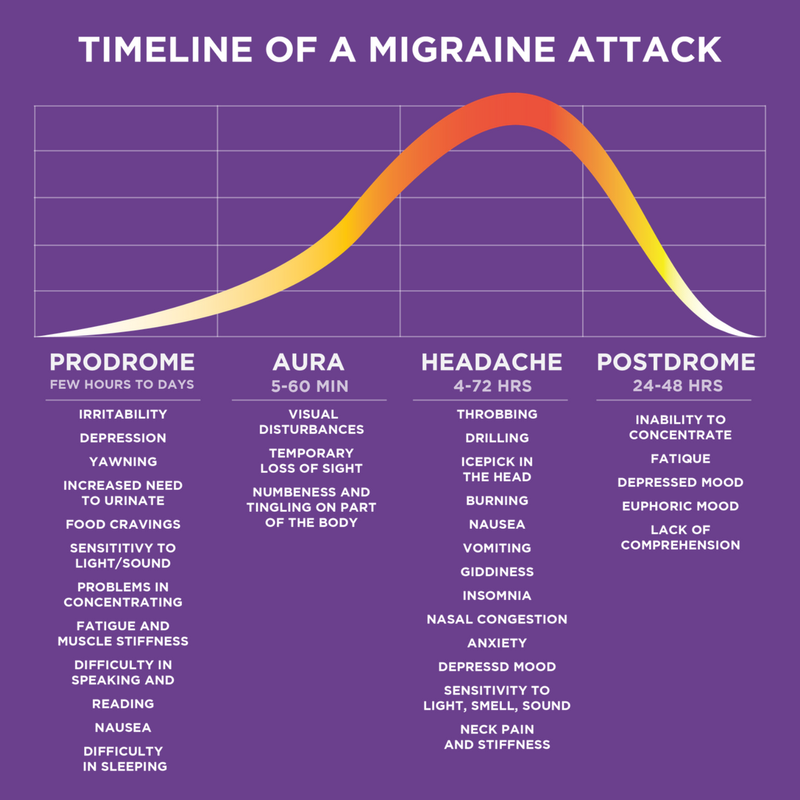

The pain phase, also known as headache phase.The aura, which immediately precedes the headache.The prodrome, which occurs hours or days before the headache.There are four possible phases to a migraine attack, although not all the phases are necessarily experienced: A migraine attack lasting longer than 72 hours is termed status migrainosus. The severity of the pain, duration of the headache, and frequency of attacks are variable. About 15–30% of people living with migraine experience episodes with aura, and they also frequently experience episodes without aura. Migraine typically presents with self-limited, recurrent severe headache associated with autonomic symptoms. The word migraine is from the Greek ἡμικρᾱνίᾱ ( hēmikrāníā), 'pain in half of the head', from ἡμι- ( hēmi-), 'half' and κρᾱνίον ( krāníon), 'skull'.

An early description consistent with migraines is contained in the Ebers Papyrus, written around 1500 BCE in ancient Egypt. As of 2016, it is one of the most common causes of disability. It most often starts at puberty and is worst during middle age. In the Global Burden of Disease Study, conducted in 2010, migraines ranked as the third-most prevalent disorder in the world. Globally, approximately 15% of people are affected by migraine. Caffeine in combination with other analgesics is safe and effective in treatment of acute migraine.

Specific medications such as triptans or ergotamines may be used in those for whom simple pain medications are not effective.

Initial recommended treatment is with simple pain medication such as ibuprofen and paracetamol (acetaminophen) for the headache, medication for the nausea, and the avoidance of triggers.
MIGRAINE AURA AFTER EXERCISE SERIES
The currently accepted theory suggests that multiple primary neuronal impairments lead to a series of intracranial and extracranial changes, triggering a physiological cascade that leads to migraine symptomatology. An older "vascular theory" postulated that the headache of migraine is produced by vasodilation and aura by vasoconstriction, but this mechanism has been disproven. Migraine is believed to be due to a mixture of environmental and genetic factors that influence the excitation and inhibition of nerve cells in the brain. Disease burden can range from episodic discrete attacks to chronic disease. Although primarily considered to be a headache disorder, migraine is highly heterogenous neurological disease in its clinical presentation and is better thought of as a spectrum disease rather than a distinct clinical entity. Up to one-third of migraine sufferers experience aura: a premonitory period of sensory disturbance widely accepted to be caused by cortical spreading depression at the onset of a migraine attack. Exacerbation of headache symptoms during physical activity is another distinguishing feature. Other characterizing symptoms may include nausea, vomiting, cognitive dysfunction, allodynia, and dizziness. Migraine ( UK: / ˈ m iː ɡ r eɪ n/, US: / ˈ m aɪ-/) is a genetically influenced complex neurological disorder characterized by episodes of moderate-to-severe headache, most often unilateral and generally associated with nausea and light and sound sensitivity. Ibuprofen, paracetamol (acetaminophen), triptans, ergotamines Subarachnoid hemorrhage, venous thrombosis, idiopathic intracranial hypertension, brain tumor, tension headache, sinusitis, cluster headache Headaches, nausea, sensitivity to light, sound, and smell


 0 kommentar(er)
0 kommentar(er)
